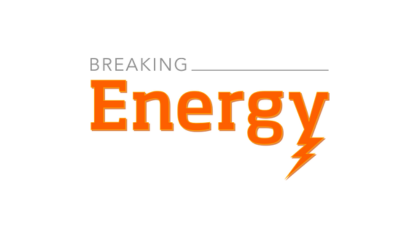
Research shows abundant possibilities for wireless charging in the future. | Photo courtesy of Oak Ridge National Lab.
In an increasingly fast-paced and mobile world, consumers are interested in being able to use technology wherever, whenever — with as little hassle as possible.
Taking a cue from some smartphones that can charge wirelessly, automakers, federal researchers and equipment manufacturers have recognized an opportunity for plug-in electric vehicles, known as PEVs. Wireless charging has the power to greatly increase the convenience and accessibility of plug-in electric vehicle charging for drivers.
Also known as inductive charging or wireless power transfer, wireless charging involves transferring power from the electric grid to a PEV battery without the use of wires, cords or plugs. It requires only a ground-based transmitting coil, or charging pad, and appropriate grid-side power electronics to transfer energy to a vehicle with a corresponding receiving coil installed. When the system is activated, the driver can simply park the vehicle over the charging pad and the system automatically recharges the vehicle.
Since launching the EV Everywhere Grand Challenge, the Department of Energy has initiated projects to develop wireless charging solutions, integrate them into commercially available PEVs, and demonstrate the technology in the real world.
Here are five things you may have not known about wireless charging for electric vehicles:
- Plug-in electric vehicles that are already available to consumers could be adapted to include wireless charging capability.
The Energy Department, national laboratories, automakers and others are working together to develop systems and standards so that any PEV can charge with any wireless charging system. PEV drivers interested in wireless charging could install it as an aftermarket system in PEVs such as the Chevrolet Volt and the Nissan Leaf. Several other automakers are working on production PEVs that have wireless charging systems built in and available at the time of purchase. Toyota and Volvo have reported verification testing on wireless charging systems for PEVs, but have not announced a timeline for market availability.
- Wireless charging could help significantly reduce harmful emissions.
By making PEVs more convenient and easier to charge, wireless charging can help drivers use their PEVs more often and drive more miles on electricity rather than gasoline. Even charged with the nation’s average electricity mix — which includes generation using fossil fuels — PEVs driving on electricity produce 30 percent fewer lifecycle greenhouse gases than the average conventional vehicle.
- Wireless charging systems could provide PEVs with as much power and efficiency as today’s Level 2 charging stations.
Commercially available wireless charging systems provide comparable power to what today’s PEVs can receive from Level 2 (240V) charging stations often used at residential and commercial properties. At this rate, it takes a PEV about four to six hours to recharge its battery. Testing has also shown that wireless systems could approach the efficiency of plug-in charging systems. Partnering with the Energy Department, Oak Ridge National Laboratory has demonstrated a wireless charging unit with 85 percent system efficiency — meaning only 15 percent of the energy is lost in the transfer from the grid service to the vehicle’s battery when charging wirelessly.
- Electric buses could charge quickly and more conveniently with wireless charging.
Researchers investigating wireless charging and its applications have primarily focused on stationary charging between a transmitting coil on the ground and a receiving coil mounted on a vehicle’s underbody. However, researchers are also exploring opportunistic, or “quasi-dynamic,” charging, which involves shorter bursts of high-power charging that better meets the needs of most public transportation vehicles. Opportunistic charging is ideal for large cities with electric buses in their transit systems, allowing the buses to get a quick charge while pausing to pick up passengers.
- Electric vehicles have the potential to receive power wirelessly while in motion.
Researchers are testing in-motion, or “dynamic,” charging that would allow drivers to “connect” to the grid and receive power to their PEVs while driving. In-motion charging involves embedding durable power transfer coils in the highway and grid connection stations at various intervals along the road. As the vehicle drives over the electrified highway, it receives a brief but high-level charge — comparable to the power output of DC Fast Charging — giving the vehicle an energy boost. Electrified roadways are at the very early stages of development, but innovative researchers and engineers are investigating ways to make it happen.
Like many alternative fuel vehicle technologies, widespread adoption of wireless charging for PEVs will require collaboration, cost reduction and technology improvement. The Energy Department recognizes PEVs as a means to reduce America’s petroleum consumption and recently announced a new multi-million dollar investment in the research and development of PEV technologies.
Learn more about the EV Everywhere Grand Challenge and current plug-in electric vehicle activities happening at the Vehicle Technologies Office.
